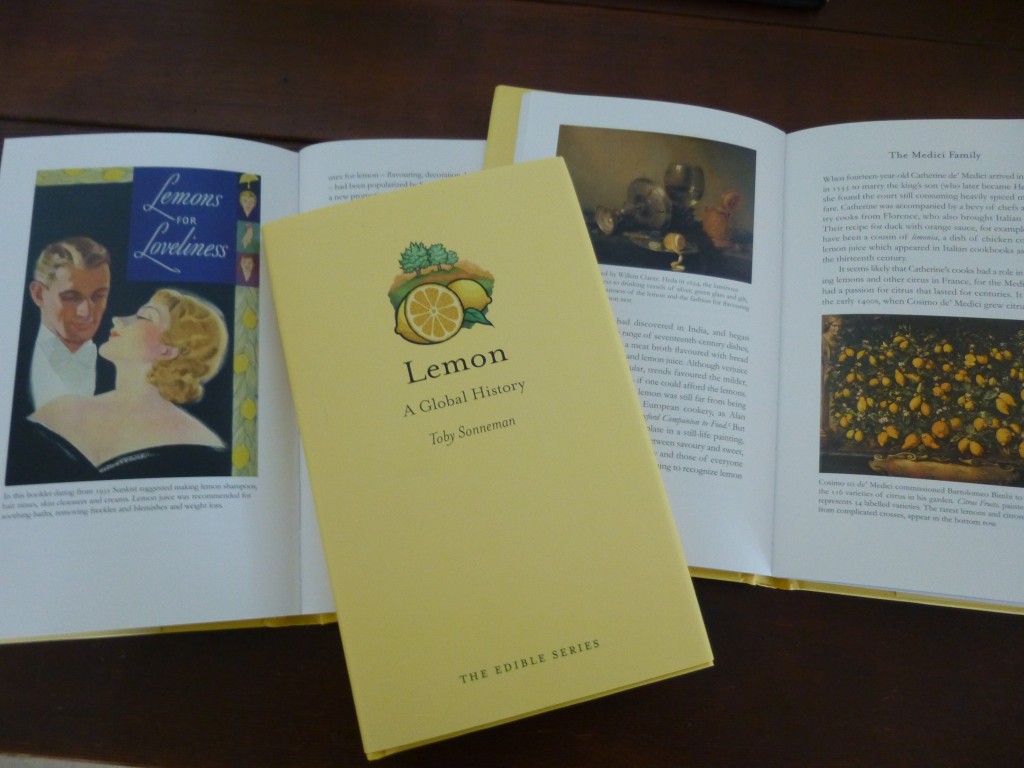When Toby Sonneman, the author of Lemon: A Global History, began suffering from migraines, she started eliminating foods from her diet to find the cause. Certain fruits, such as figs, papayas, and plums can trigger severe headaches, but she was relieved to discover lemons were not the culprit. Through the process, she gained a newfound appreciation for the citrus. In fact, Sonneman found the lemon so intriguing she travelled to Italy to visit the Lemon Riviera in Sicily and spent several days working at a lemon orchard. She continued to the Alps in northern Italy to see the restored lemon greenhouses, and went on to the Southern Amalfi Coast to view the ancient lemon gardens embedded into the hillsides. She became a lemon expert and in Lemon: A Global History, we have her there to guide us.
Lemon: A Global History, discusses the origin of the lemon, its contribution to history, and its place in the world today. Starting with the citron – a fruit with a leathery rind containing sweet tasting white flesh but bitter pulp – the reader follows this ancestor of the lemon and its trip originating from the Middle East, continuing into Europe and ending in the United States. We learn tidbits about the yellow fruit: Citrus fruits were such a luxury during mid-17th century London that a dozen lemons cost three shillings while in comparison, the average laborer earned a shilling a day. Or how Sicilian immigrants arrived in New Orleans and took advantage during the hot weather months to sell granitas, a confection created in Italy, which was made from shaved ice, sugar and lemon juice. This evolved into the treat we know today as “Italian ice.” Sonneman’s account of the lemon is also filled with fascinating historical details: Prior to representing the well-known citrus fruit company, the Sunkist logo was used to indicate top quality lemons being sold to the public.
The book is completed with a guide on the uses of lemons in the kitchen and includes the very first lemon recipe ever written which gives detailed instructions on how to preserve lemons. This was useful for a time before refrigeration was available and is now utilized in many ethnic dishes. The book also contains over 40 illustrations and color photographs depicting the importance of the lemon in history.
The book was a quick and easy read, but held a good amount of information. I would recommend Lemon: A Global History to anyone who has even the slightest interest in the lemon’s role in history. This book is a reminder of how something as simple as the lemon can have quite a complicated past.
Jane Moon received her MFA in Creative Writing at The New School. She is currently writing her first novel.



Comments are closed.